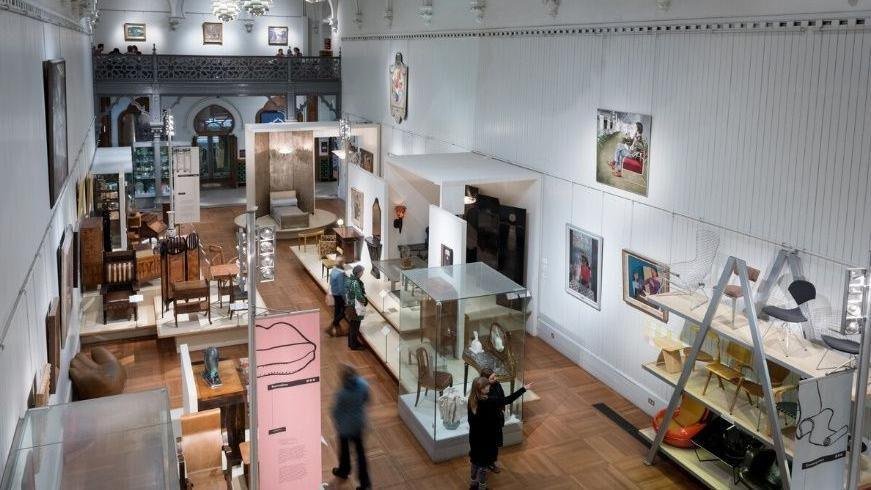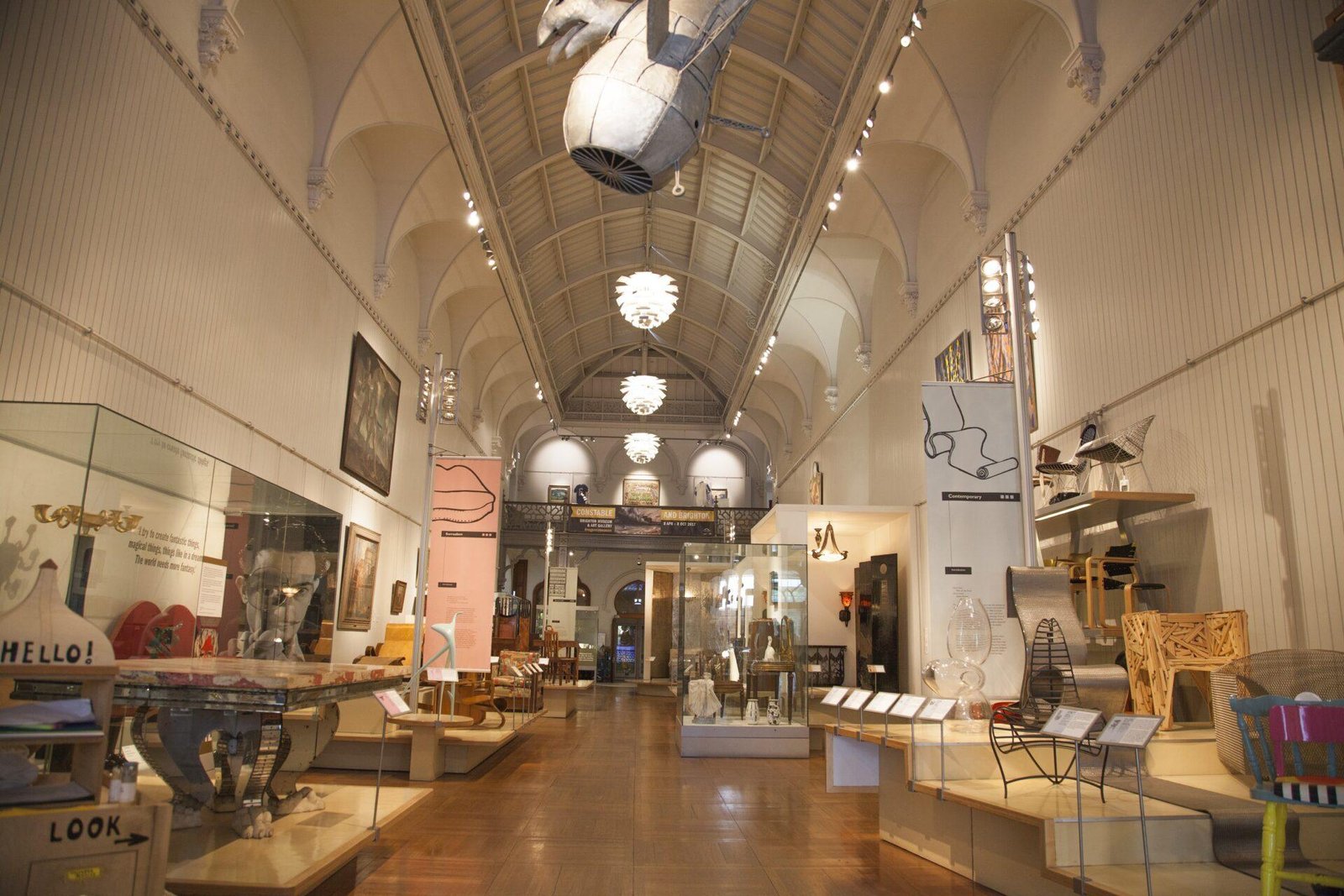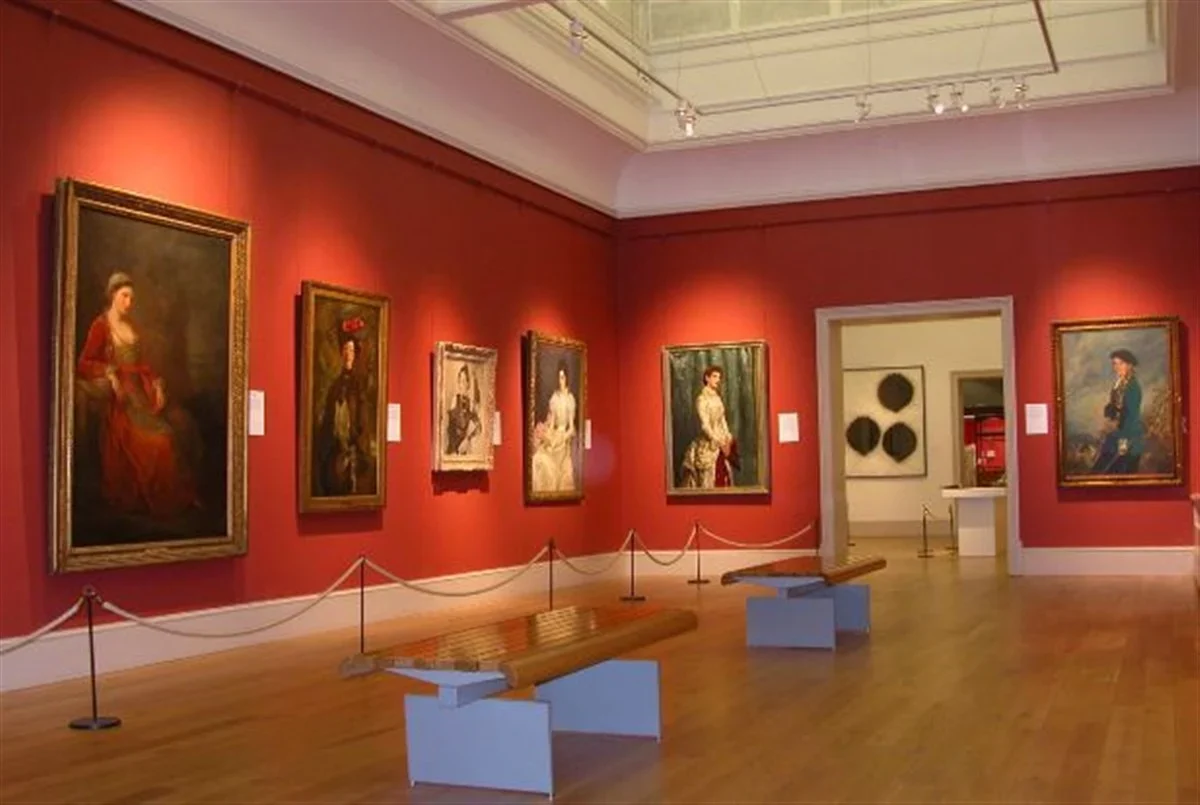Disclosure: The following article contains affiliate links. This means that if you book through my links, I may receive a small commission. There is no extra cost to you.
Key Takeaways for Brighton Museum & Art Gallery
- Brighton Museum & Art Gallery is a vibrant cultural hub located in the Royal Pavilion Gardens, ideal for families, couples, and solo travellers.
- The building was originally intended as a tennis court for Prince George (later George IV) and later became a museum in 1873.
- It houses over 500,000 objects, including extensive fashion, fine art, archaeology, and local history collections.
- The museum is known for its inclusive spirit, featuring exhibits like "Queer the Pier" celebrating Brighton’s LGBTQ+ heritage.
- Open Tuesday to Sunday, 10:00 AM–5:00 PM; closed Mondays (except Bank Holidays).
- Admission is free for Brighton & Hove residents; standard tickets include a 12-month free return.
- The museum is fully accessible, with lifts, accessible toilets, and free entry for carers.
- Located close to major Brighton attractions: Royal Pavilion, Brighton Pier, The Lanes, and Sea Life Brighton.
- Families can enjoy interactive exhibits, storytelling, and workshops; audio guides are available for deeper engagement.
- Best times to visit are spring (April–May) and autumn (September–October) to avoid peak crowds.
- Museum features heavily in seasonal events like the Brighton Festival, Brighton Fringe, and winter ice skating.
- Part of a wider UK cultural network, making it a great starting point for a UK-wide museum trail.
- Surrounded by diverse dining and accommodation options, from budget hostels to luxury hotels.
- Easily accessible by train from London (1 hour), with nearby bike and public transport options.
- A must-visit for anyone looking to explore Brighton’s history, creativity, and cultural diversity.
Introduction to Brighton Museum & Art Gallery
Brighton, the vibrant seaside city on England’s south coast, is a kaleidoscope of culture, history, and creativity. At its heart lies the Brighton Museum & Art Gallery, a treasure trove of art, history, and local stories that draws visitors from across the UK and beyond. Whether you’re a family seeking interactive fun, a couple craving a cultural escape, or a solo traveller hunting for inspiration, this museum is a must-visit. But it’s more than just a single destination; it’s a gateway to exploring the UK’s rich tapestry of museums, galleries, and cultural experiences. Let’s dive into why Brighton Museum & Art Gallery is the perfect starting point for your next UK adventure.
A Brief History of Brighton Museum & Art Gallery
Tucked within the Royal Pavilion Estate, the Brighton Museum & Art Gallery occupies a building originally intended as a tennis court for Prince George (later King George IV) in the early 19th century. The project was never completed, and the space later served as cavalry barracks before transforming into the cultural hub it is today. Opened as a museum in 1873, it has grown into one of the UK’s most eclectic regional collections, showcasing everything from ancient Egyptian artefacts to 20th-century fashion.
The museum’s location in the Royal Pavilion Estate ties it to Brighton’s regal past. George IV’s love for the city turned it from a humble fishing village, Brighthelmstone, into a fashionable Regency-era resort. This transformation is reflected in the museum’s exhibits, which blend local history with global treasures, offering a window into Brighton’s evolution and its place in the world.

Why Visit Brighton Museum & Art Gallery?
The museum is a microcosm of Brighton’s quirky, inclusive spirit. Its collections span fine art, fashion, archaeology, and local history, making it appealing to diverse audiences. Families will love the interactive galleries and hands-on workshops, while couples and solo travellers can lose themselves in the stories behind the exhibits, from Art Deco furniture to Brighton’s vibrant LGBTQ+ heritage.
Key Facts and Figures
- Location: Royal Pavilion Gardens, Brighton, BN1 1EE
- Opening Hours: Tuesday–Sunday, 10:00 AM–5:00 PM (closed Mondays, except Bank Holidays)
- Admission: Adults £9, Children (5–18) £4, Under 5s free, Family tickets from £13. Free for Brighton & Hove residents.
- Collection Size: Over 500,000 objects, including 15,000 fashion and textile items and 10,000 fine art pieces.
- Accessibility: Fully wheelchair accessible with a lift, accessible toilets, and free entry for carers accompanying disabled visitors.
- Popularity: Attracts over 100,000 visitors annually, with a spike during the Brighton Festival in May.
The museum’s eclectic mix reflects the UK’s broader museum landscape, where regional institutions often rival national ones in diversity and innovation. From London’s Victoria and Albert Museum to Manchester’s Whitworth Art Gallery, the UK is dotted with cultural hubs that blend local pride with global perspectives.
Major Destinations and Attractions
Brighton Museum & Art Gallery is just one piece of the city’s cultural puzzle. Here are other must-visit attractions in Brighton and beyond to complement your museum experience:
In Brighton
- Royal Pavilion: Next door, this Indo-Saracenic palace is a dazzling testament to George IV’s extravagance, with opulent interiors and lush gardens.
- Brighton Palace Pier: A classic seaside experience with rides, arcades, and fish and chips, perfect for families.
- The Lanes: Narrow alleyways filled with boutique shops, cafes, and galleries, ideal for couples and solo explorers.
- Sea Life Brighton: The world’s oldest operating aquarium, offering underwater tunnels and marine life displays.
- Brighton i360: A 531-foot observation tower with panoramic views of the city and the English Channel.
Beyond Brighton
- Ashmolean Museum, Oxford: The UK’s oldest public museum, with collections ranging from ancient Egypt to modern art.
- Kelvingrove Art Gallery and Museum, Glasgow: A Scottish gem with everything from Renaissance paintings to a Spitfire plane.
- National Railway Museum, York: Perfect for families, showcasing the history of rail travel with interactive exhibits.
- Tate St Ives, Cornwall: A coastal gallery blending modern art with the region’s artistic heritage.
- Museum of Liverpool: A vibrant exploration of the city’s cultural and maritime history.
These destinations highlight the UK’s diversity, from coastal art hubs to industrial heritage sites, making it easy to craft a cultural itinerary that spans the country.
Travel Tips and Practical Advice
Getting There
Brighton is easily accessible from London, with trains from London Victoria or London Bridge taking about an hour. The museum is a 15-minute walk from Brighton Railway Station. If driving, note there’s no on-site parking, but Parkopedia lists nearby car parks, and a Park and Ride service is available. Cyclists can use Brighton’s BikeShare scheme, with racks near the museum.
Booking and Admission
Tickets can be purchased online or at the door. They’re valid for a year, allowing multiple visits, a great perk for repeat travellers. UK taxpayers can opt for Gift Aid, adding 25p per £1 spent to support the museum without extra cost. Group rates are available for 12+ people, and audio guides (£2–£4) enhance the experience.
Accessibility
The museum is family-friendly and accessible, with a wheelchair lift, tactile exhibits, and large-print transcripts. Low lighting in some galleries (e.g., Costume and Prints) aids conservation but may affect visibility. Inform staff of any needs for a smooth visit.
When to Go
Spring (April–May) and autumn (September–October) offer mild weather and fewer crowds. May is particularly lively due to the Brighton Festival. Avoid peak summer weekends if you prefer a quieter experience. Winter brings festive events like ice skating in the Pavilion Gardens.
Family-Friendliness
Kids will enjoy hands-on workshops, storytelling sessions, and the quirky Natural Sciences collection, featuring half a million insects. The museum’s central location makes it easy to pair with nearby attractions like the pier or Sea Life for a full family day out.

Suggested Itineraries
One-Day Brighton Cultural Escape
- Morning: Start at Brighton Museum & Art Gallery (2–3 hours). Explore the World Stories gallery and the Fashion and Style exhibit. Grab a coffee at the museum’s cafe.
- Afternoon: Visit the Royal Pavilion next door, followed by lunch in The Lanes at a spot like The Pump House. Stroll to Brighton Palace Pier for classic seaside fun.
- Evening: Catch a show at the Brighton Dome or enjoy a sunset view from the Brighton i360. Dine at The Salt Room for seafood with a view.
Three-Day Sussex Cultural Adventure
- Day 1: Explore Brighton Museum & Art Gallery and the Royal Pavilion. Wander The Lanes for shopping and dinner at Riddle and Finns for fresh oysters.
- Day 2: Take a morning train to Lewes (15 minutes) to visit Lewes Castle and the Barbican House Museum. Return to Brighton for a street art tour with REQ and an evening at Komedia for comedy.
- Day 3: Head to the South Downs for a guided e-bike tour or a visit to Bolney Wine Estate. End with a starling murmuration at West Pier (October–March).
UK-Wide Museum Trail (7 Days)
- Day 1–2: Start in Brighton with the museum and Royal Pavilion. Stay at the Maldron Hotel Brighton City Centre.
- Day 3: Train to London (1 hour) for the V&A and British Museum. Stay at a budget-friendly Premier Inn.
- Day 4–5: Head to Oxford for the Ashmolean and Pitt Rivers Museums. Enjoy a pub dinner at The Eagle and Child.
- Day 6: Travel to York for the National Railway Museum and York Art Gallery. Stay at The Principal York.
- Day 7: End in Glasgow at Kelvingrove Art Gallery and Museum. Dine at The Ubiquitous Chip.
Brighton Museum started life as a royal tennis court for George IV, but was never finished. It became a cavalry barracks before turning into the museum we know today!
Where to Eat and Stay
Dining in Brighton
- The Salt Room: A seafront gem for coal-cooked seafood, perfect for couples. Try the Crab Benedict.
- Riddle and Finns: A Lane's favourite for oysters and champagne, ideal for a romantic dinner.
- Bardsley’s: Family-friendly fish and chips with a local vibe. Great for a quick, budget meal.
- The Pump House: A cosy pub in The Lanes with hearty British dishes, suitable for all travellers.
- Lucky Beach Café: Casual beachfront dining with organic burgers and kid-friendly options.
Accommodation
Seasonal Events and Special Experiences
Brighton’s cultural calendar is packed, and the museum plays a central role. Here are highlights:
- Brighton Festival (May): The UK’s largest multi-arts festival, with theatre, music, and art events. The museum often hosts special exhibitions, like “Queer the Pier” or “Finding Faberge.”
- Winter Ice Skating (November–January): The Pavilion Gardens transform into a rink with the Royal Pavilion as a stunning backdrop.
- Starling Murmuration (October–March): A free natural spectacle at West Pier, where thousands of starlings create mesmerising aerial displays at sunset.
- Brighton Fringe (May): A vibrant festival with comedy, cabaret, and pop-up events, some hosted at the museum.
- Museum Workshops: Year-round family activities like artefact handling, storytelling, and art classes. Check the museum’s “What’s On” page for updates.
Beyond Brighton, the UK offers seasonal delights:
- Edinburgh Festival Fringe (August): The world’s largest arts festival, perfect for cultural explorers.
- London’s Winter Lights (January): Illuminated art installations across the city.
- Bath Christmas Market (November–December): A festive market near the Roman Baths.
Exploring the UK’s Cultural Tapestry
Brighton Museum & Art Gallery is a microcosm of the UK’s cultural diversity. Like many regional museums, it balances local pride with global stories, a trait shared by institutions like the Museum of Liverpool or the Ulster Museum in Belfast. These spaces remind us that the UK’s history is layered, with Roman, Viking, Regency, and modern influences coexisting in its cities and towns.
For families, the UK’s museums offer endless interactive fun, from the Science Museum in London to the World Museum in Liverpool. Couples can indulge in romantic gallery visits, like the Tate Modern or the Scottish National Gallery. Solo travellers will find inspiration in offbeat spots like the Pitt Rivers Museum in Oxford or the People’s History Museum in Manchester.
Brighton itself is a microcosm of the UK’s progressive spirit. Its LGBTQ+ heritage, celebrated in the museum’s “Queer the Pier” exhibit, echoes the inclusivity of cities like Manchester and Bristol. The city’s blend of seaside charm and urban buzz makes it a perfect base for exploring Sussex’s vineyards, castles, and countryside, or for venturing further to cultural hubs like London, Edinburgh, or Bath.
“Queer the Pier” was co-curated by LGBTQ+ community members in Brighton. It celebrates queer stories often overlooked in mainstream history and it all started as a grassroots project!
Final Thoughts
Brighton Museum & Art Gallery is more than a collection of objects; it’s a gateway to understanding Brighton’s soul and the UK’s rich cultural heritage. Whether you’re marvelling at ancient artefacts, exploring local history, or joining a workshop, the museum offers something for everyone. Pair your visit with Brighton’s piers, pavilions, and festivals, and you’ve got the recipe for an unforgettable trip. So, pack your curiosity and head to Brighton, your cultural adventure awaits!

Frequently Asked Questions – Brighton Museum & Art Gallery
Where is Brighton Museum & Art Gallery located?
The museum is in the heart of Brighton, inside the Royal Pavilion Gardens. The full address is Royal Pavilion Gardens, Brighton, BN1 1EE, just a short walk from Brighton Station and moments from The Lanes.
What are the museum’s opening hours?
It’s open Tuesday to Sunday, from 10:00 AM to 5:00 PM. The museum is closed on Mondays, except for Bank Holidays when it stays open.
How much does admission cost?
Adults: £9
Children (5–18): £4
Under 5s: Free
Family tickets start at £13
Brighton & Hove residents: Free entry (proof of address required)
Gift Aid options are available for UK taxpayers.
Is Brighton Museum suitable for children and families?
Absolutely. The museum offers hands-on exhibits, storytelling sessions, and fun workshops. The quirky Natural Sciences collection, with insects and fossils, is a hit with curious kids.
Is the museum accessible to wheelchair users and those with disabilities?
Yes, it’s fully accessible. There’s a lift, accessible toilets, large-print guides, and tactile exhibits. Carers enter for free. If you have any specific needs, the staff are happy to help.
Can I buy tickets in advance?
Yes, tickets can be purchased online or at the door. Bonus: Your ticket is valid for 12 months, so you can return for free throughout the year.
How long should I plan for a visit?
Most visitors spend 2–3 hours, especially if you explore multiple galleries or join a workshop. Pairing your visit with the Royal Pavilion next door makes for a full cultural morning or afternoon.
What’s the best time to visit the museum?
Visit in spring or autumn for milder weather and fewer crowds. May is a lively time due to the Brighton Festival, while winter offers festive cheer and ice skating in the Pavilion Gardens.
What are the top exhibits to see?
Don't miss:
The Fashion and Style gallery (with 20th-century gems)
The World Stories gallery
The Queer the Pier exhibit, celebrating Brighton’s LGBTQ+ history
Artefacts from Ancient Egypt, Asia, and local Regency Brighton
Can I get food and drink on-site?
Yes, there's a café inside the museum for coffee, light bites, and sweet treats. Alternatively, The Lanes is just around the corner with pubs and restaurants for every taste.
Are there guided tours or audio guides?
Yes! You can enhance your experience with an audio guide (£2–£4), available at the front desk. Group tours are available for parties of 12 or more, perfect for school trips or clubs.
What else can I do nearby?
You’re steps away from the top Brighton attractions, including:
The Royal Pavilion (right next door)
Brighton Palace Pier
The Lanes shopping district
Sea Life Brighton
The Brighton i360 observation tower
What if I’m visiting as part of a longer UK trip?
Brighton is a perfect starting point for a UK-wide museum adventure. Within easy reach are the V&A in London, the Ashmolean in Oxford, and the Kelvingrove in Glasgow, all highlighted in our cultural itinerary section.
Is there parking available?
There’s no on-site parking, but nearby options can be found using Parkopedia. A Park and Ride service is available, and cyclists can use Brighton BikeShare with docking stations near the museum.
Does the museum host special events or seasonal exhibitions?
Yes! The museum hosts temporary exhibitions, family workshops, and takes part in the Brighton Festival and the Brighton Fringe. Check the “What’s On” section on their official site before your visit.
Can I take photos inside the museum?
Personal photography is usually allowed (no flash), but some temporary exhibitions may have restrictions. Always check signage or ask staff for guidance.
Is there a gift shop?
Yes, the museum shop offers a range of unique gifts, art books, children’s toys, and Brighton-themed souvenirs, perfect for thoughtful travel mementoes.

